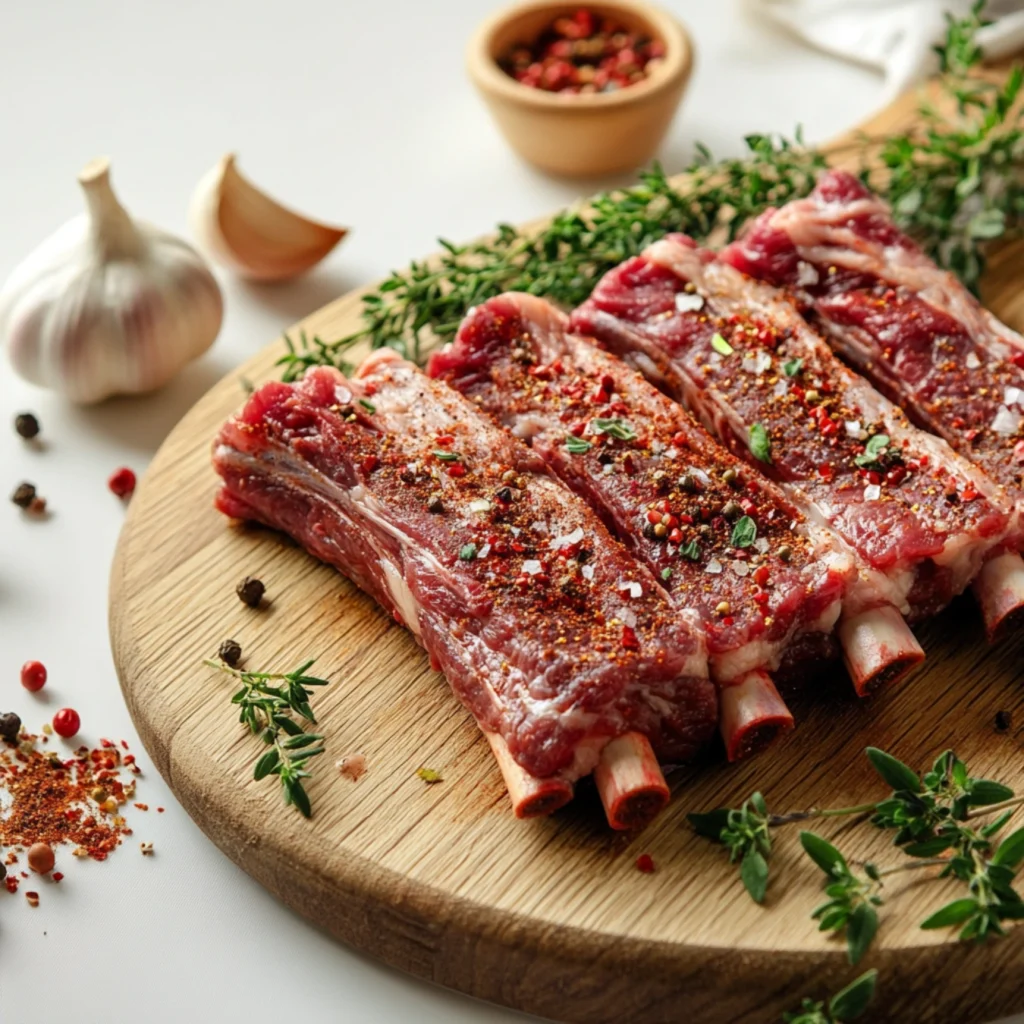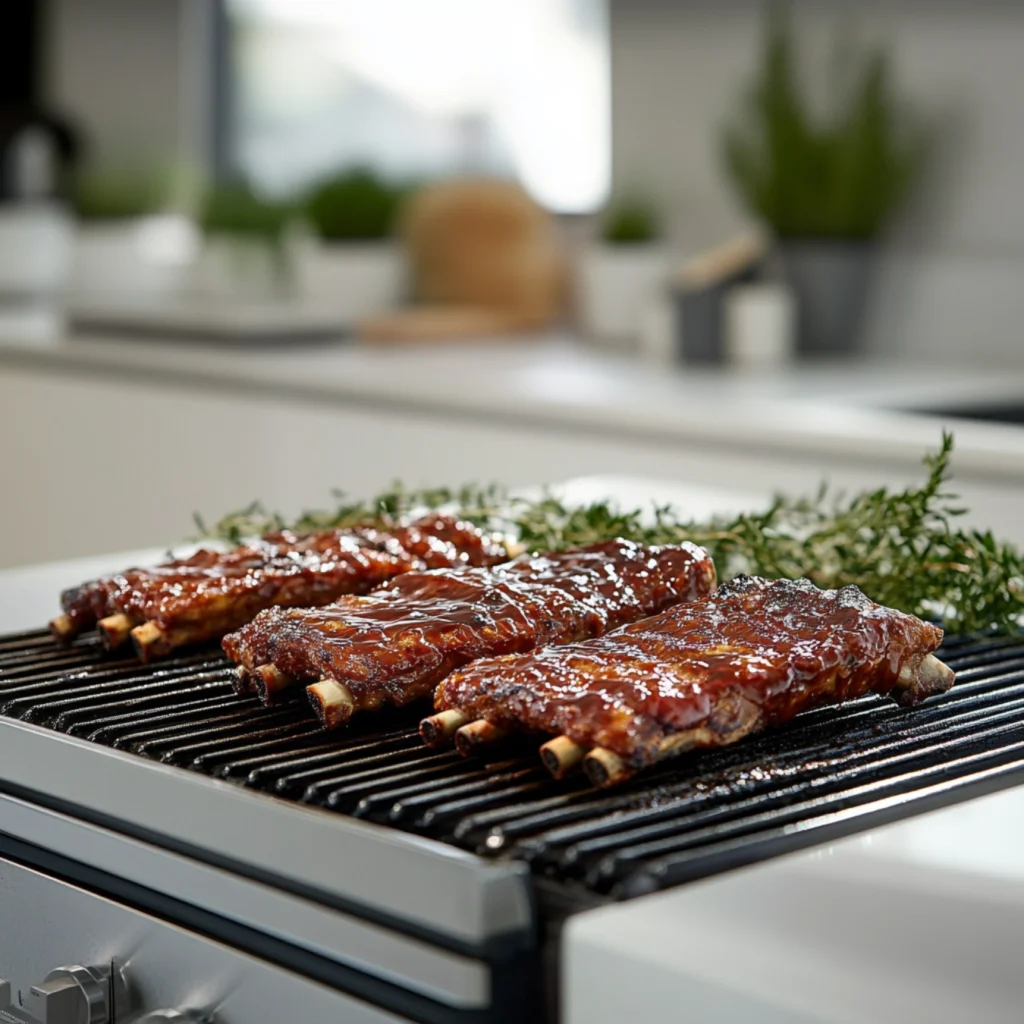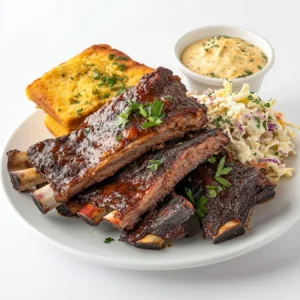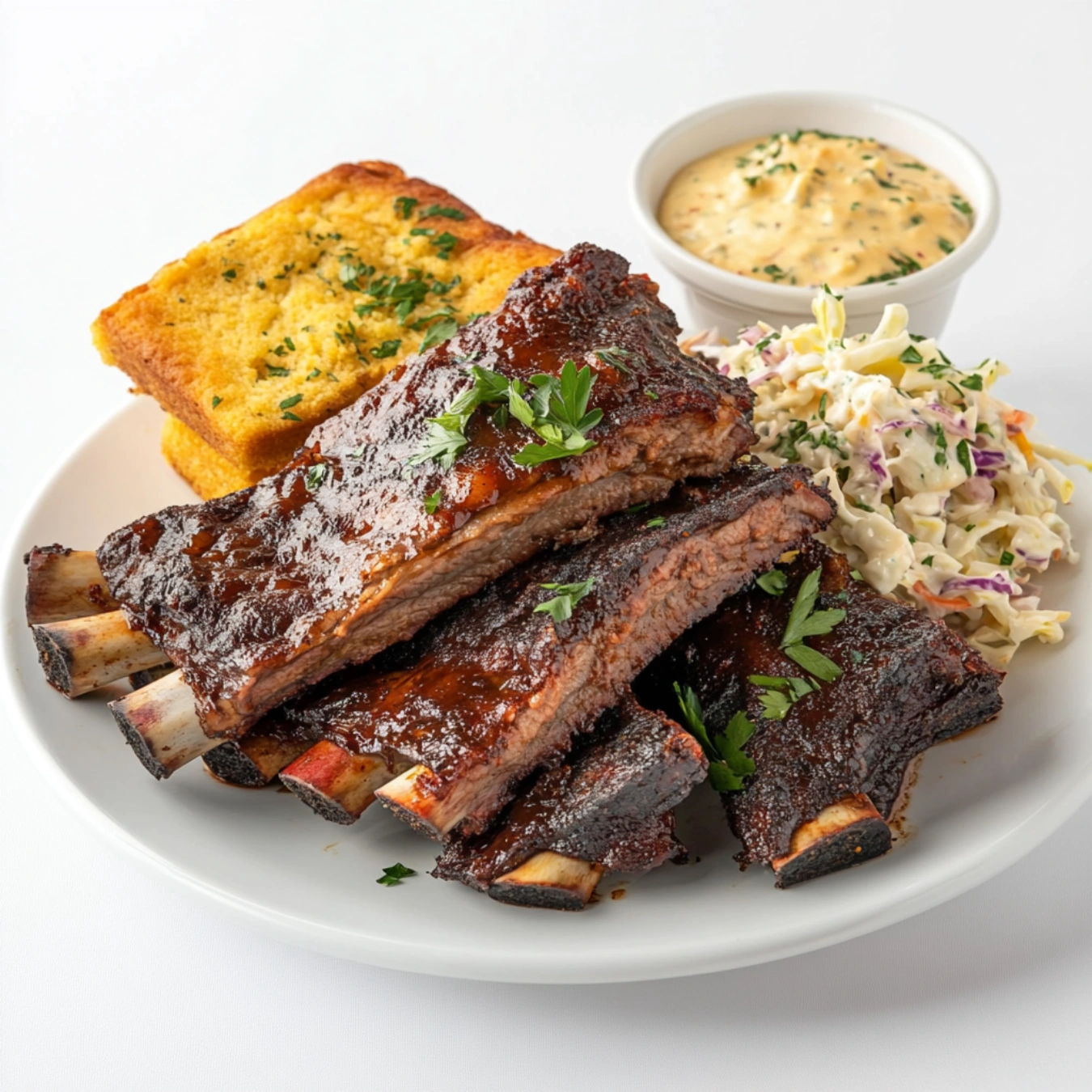Get ready for the most delicious, smoky, fall-off-the-bone Beef Back Ribs Recipe you’ve ever had! These slow-cooked beauties are rich in flavor and finished with a sticky, caramelized BBQ glaze that will have you licking your fingers. Whether you’re firing up the grill or using your oven, this no-fail recipe will make your kitchen smell like a smokehouse!
Table of Contents
Why You Will Love This Recipe
✔ Melt-in-Your-Mouth Tenderness : The low-and-slow cooking method makes the meat fall off the bone.
✔ Smoky, Sweet & Slightly Spicy : A sticky BBQ glaze balances all the flavors perfectly.
✔ Simple & Hands-Off : Just let the oven or grill do the work!
✔ Cook in the Oven or on the Grill : Easy and adaptable for any kitchen setup.
Ingredients
For the Ribs:
- Beef Back Ribs : The star of the show! Look for well-marbled ribs for the most tender results.
- Olive Oil : Adds richness and helps the seasoning stick.
- Salt & Black Pepper : Essential for highlighting the beefy flavor.
- Smoked Paprika : Adds a deep smoky flavor.
- Garlic Powder & Onion Powder : Flavor powerhouses that add depth and aroma.
- Cayenne Pepper (Optional) : Adds a hint of heat (skip for mild ribs).
- Brown Sugar : Balances the spices with a touch of sweetness.
For the BBQ Glaze:
- Barbecue Sauce : Use your favorite brand for a thick, tangy base.
- Honey : Adds natural sweetness and helps create a sticky glaze.
- Apple Cider Vinegar : Provides just the right acidity to balance the sweetness.
- Worcestershire Sauce : Deepens the umami richness.
- Fresh Parsley (Optional) : A pop of color and freshness for garnish.
- Extra BBQ Sauce : Because extra sauce is always a great idea!
👉 The complete ingredient list with measurements is in the recipe card below!
How to Make Beef Back Ribs
Step 1: Prepare the Ribs
1️⃣ Preheat the Oven : Set your oven to 275°F (135°C).
2️⃣ Remove the Membrane : Flip the ribs bone-side up and use a knife to loosen the thin silver membrane. Grab it with a paper towel and pull it makes a huge difference in tenderness!
3️⃣ Season the Ribs : Rub the ribs with olive oil. In a small bowl, mix together:
✅ Salt
✅ Black pepper
✅ Smoked paprika
✅ Onion powder
✅ Garlic powder
✅ Cayenne (if using)
✅ Brown sugar
4️⃣ Massage the seasoning all over the ribs, coating both sides.
Step 2: Slow Cook the Ribs
5️⃣ Wrap in Foil : Tightly wrap the ribs in foil to trap moisture.
6️⃣ Bake for 3 Hours : Place them on a baking sheet and cook low and slow. You’ll know they’re done when the meat pulls away from the bone!
Step 3: Make the BBQ Glaze
7️⃣ In a Small Saucepan, Combine:
✅ BBQ sauce
✅ Honey
✅ Apple cider vinegar
✅ Worcestershire sauce
8️⃣ Simmer for 5 Minutes : Stir until the glaze is thick and glossy.
Step 4: Glaze & Caramelize
9️⃣ Unwrap the Ribs : Carefully remove them from the foil; they’ll be super tender!
🔟 Brush with BBQ Glaze : Use a brush to coat the ribs generously.
Step 5: Finish on the Grill or Under the Broiler
- Broiler Method: Place under the broiler for 5-7 minutes until the sauce caramelizes.
- Grill Method: Heat the grill to medium and cook for 5 minutes per side until slightly charred.
Step 6: Rest & Serve
1️⃣1️⃣ Let the Ribs Rest : Allow them to sit for 5 minutes to lock in the juices.
1️⃣2️⃣ Slice & Enjoy! Garnish with fresh parsley and serve with extra BBQ sauce.

For more hearty and flavorful recipes, don’t miss our popular Boneless Beef Short Ribs Recipe, a fantastic companion to beef back ribs.
Pro Tips for Perfect Ribs
✔ Remove the Membrane : This ensures tender, juicy meat.
✔ Don’t Skip Low & Slow Cooking : Baking at 275°F for 3 hours creates fall-apart ribs.
✔ Broil or Grill for a Final Char : Adds that restaurant-quality caramelized finish.
✔ Let Them Rest : This helps the juices redistribute for the best texture.
How to Serve
These BBQ beef back ribs pair beautifully with:
🥔 Classic Sides: Baked beans, cornbread, or coleslaw.
🍟 Crispy Fries: Sweet potato fries or classic French fries.
🌽 Grilled Veggies: Roasted Brussels sprouts or charred corn on the cob.
🧀 Mac & Cheese: Creamy, cheesy goodness alongside tender ribs!
Make Ahead & Storage
Storing Leftovers
- Refrigeration: Store in an airtight container for up to 3 days.
- Reheat with Extra Sauce – Keeps them moist and flavorful.
Freezing
- Wrap tightly in foil, then place in a zip-top freezer bag. Freeze for up to 3 months.
- Thaw overnight in the refrigerator before reheating.
Reheating
- Oven: Cover ribs with foil and bake at 300°F (150°C) for 15 minutes.
- Microwave: Heat in 30-second bursts, covering with a damp paper towel.
- Grill: Brush with BBQ sauce and grill for 5 minutes for a fresh-off-the-grill taste.

FAQs
1. How do I know when my ribs are done?
The meat should pull away from the bone easily and twist without resistance.
2. Can I make these in a slow cooker?
Yes! Cook on low for 6-8 hours, then finish under the broiler or on the grill with the BBQ glaze.
3. Do I have to finish them on the grill or broiler?
Not necessarily, but it adds a caramelized, smoky finish that takes them to the next level!
4. What’s the best BBQ sauce to use?
Go for a smoky BBQ sauce or a spicy-sweet honey BBQ for an extra flavor kick.
Conclusion
These slow-cooked beef back ribs are smoky, tender, and coated in a delicious BBQ sauce. Whether it’s a comforting weekend dinner or a summer barbecue, this dish is guaranteed to impress!
🔥 So grab some napkins you’ll need them 😉 and dig in!

Beef Back Ribs
Equipment
- Oven
- Aluminum Foil
- Baking sheet
- Small saucepan
Ingredients
For the Ribs
- 2 racks beef back ribs about 4-5 lbs
- 1 tablespoon olive oil
- 1 teaspoon salt
- 1 teaspoon black pepper
- 1 tablespoon smoked paprika
- 1 teaspoon garlic powder
- 1 teaspoon onion powder
- ½ teaspoon cayenne pepper optional for heat
- 1 teaspoon brown sugar
For the BBQ Glaze
- 1 cup barbecue sauce your favorite brand
- 2 tablespoons honey
- 1 tablespoon apple cider vinegar
- 1 teaspoon Worcestershire sauce
For Serving (Optional)
- fresh parsley for garnish
- extra BBQ sauce on the side
Instructions
- Preheat the oven to 275°F (135°C).
- Flip the ribs bone-side up and use a knife to loosen the thin silver membrane. Peel it off using a paper towel for better grip.
- Rub olive oil over both sides of the ribs.
- In a small bowl, mix salt, black pepper, smoked paprika, garlic powder, onion powder, cayenne pepper (if using), and brown sugar. Rub evenly over the ribs.
- Place the ribs on a large sheet of foil and wrap tightly to lock in moisture.
- Place on a baking sheet and bake for 3 hours, or until the meat is tender and pulls away from the bone.
- In a small saucepan, combine BBQ sauce, honey, apple cider vinegar, and Worcestershire sauce. Simmer for 5 minutes, stirring occasionally.
- Unwrap the ribs and brush generously with the BBQ glaze.
- Place under the broiler for 5-7 minutes, or grill over medium heat for 5 minutes per side, until caramelized.
- Let the ribs rest for 5 minutes before slicing. Serve with extra BBQ sauce and fresh parsley for garnish.

